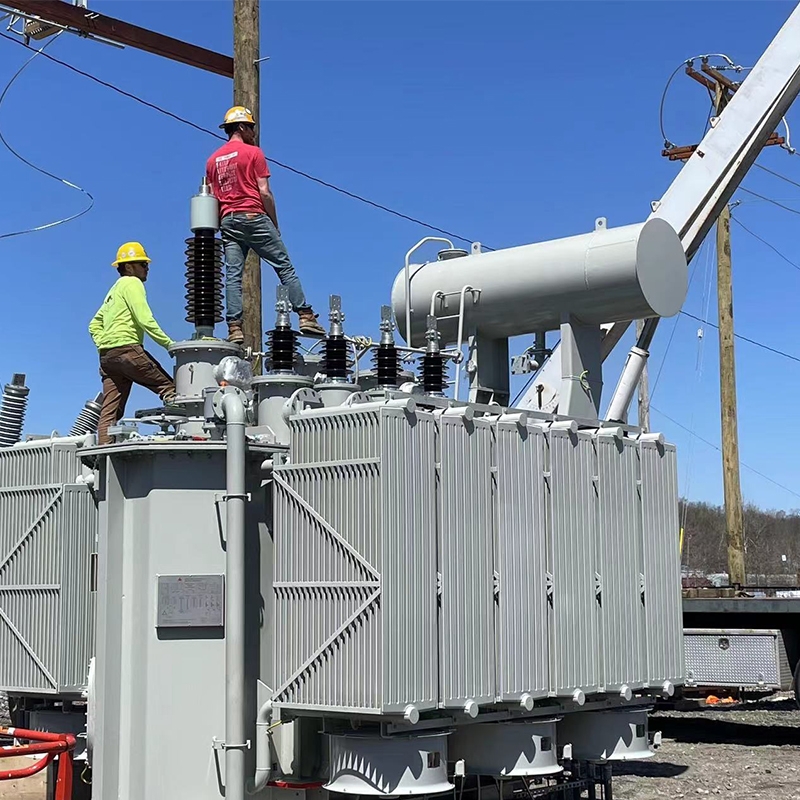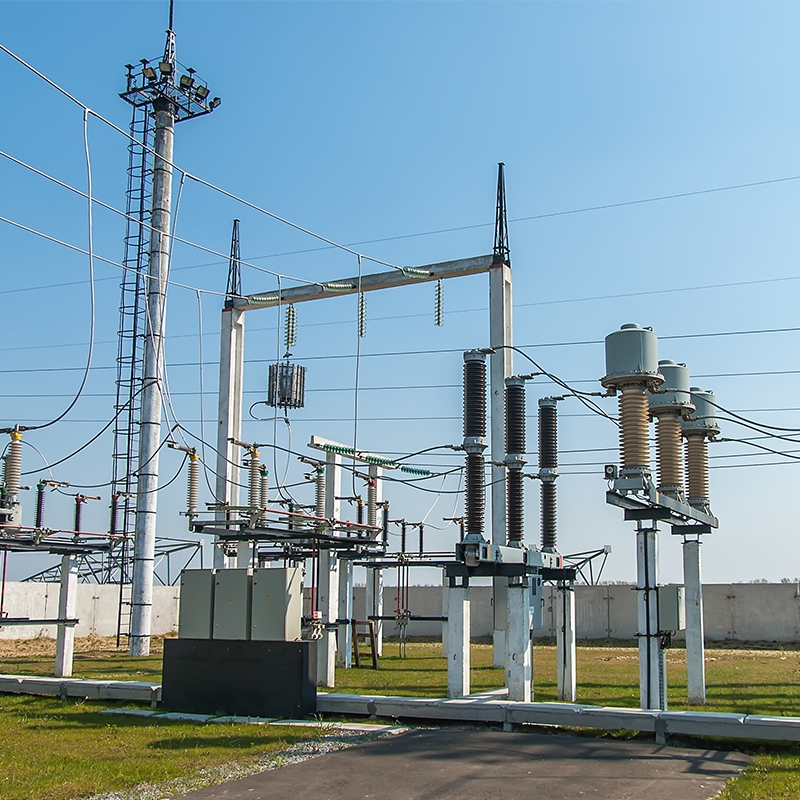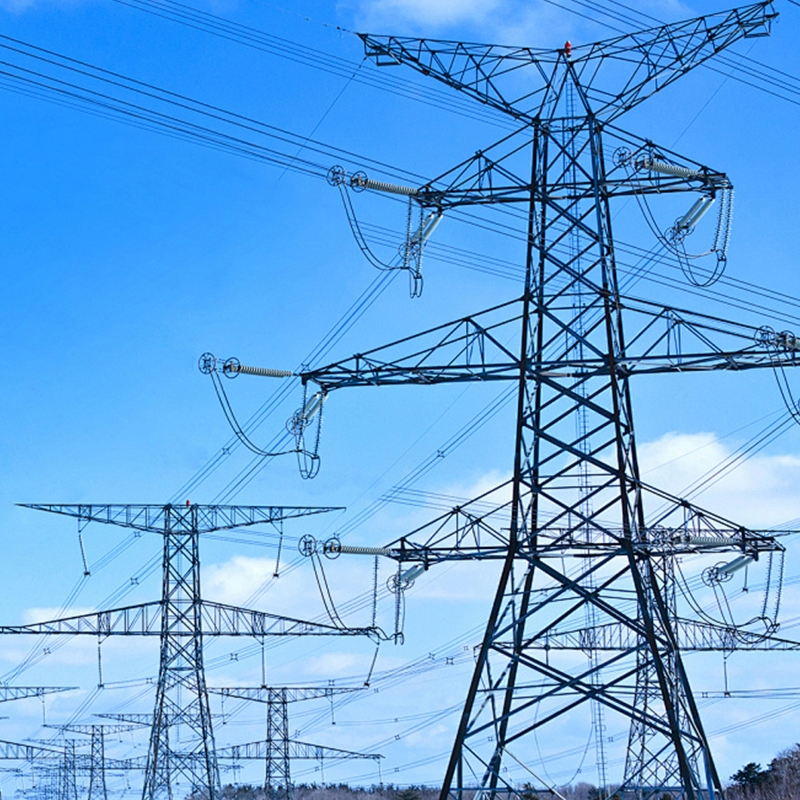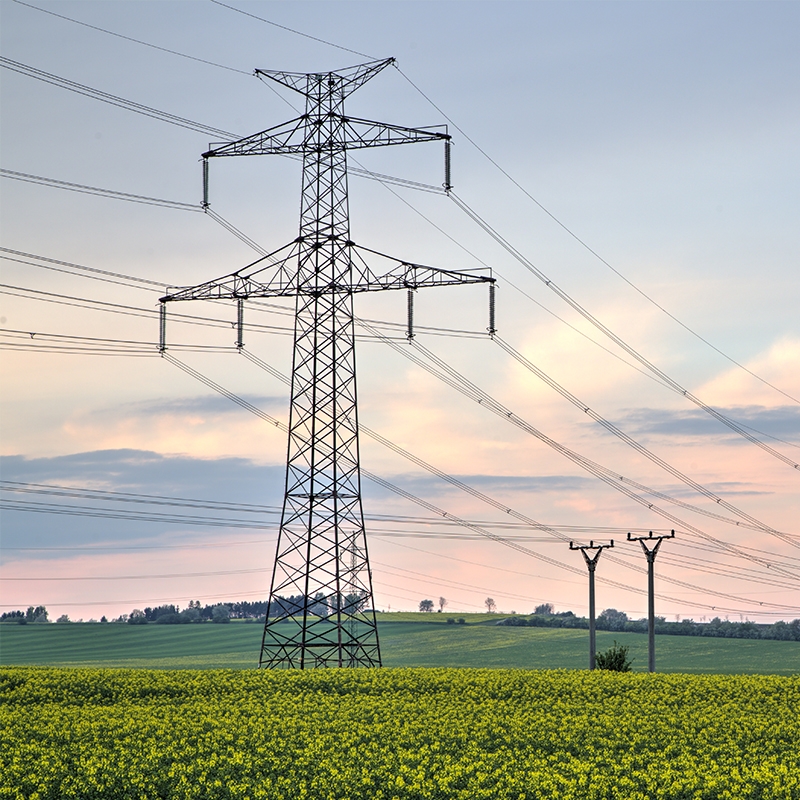Explanation of Basic Knowledge of Transformer bushings
The function of transformer bushings: They are insulating devices that lead the leads of transformer coils to the outside of the oil tank respectively. They not only insulate the leads from the oil tank but also serve as the fixing devices for the leads.
During the operation of the transformer, the bushing is constantly subjected to load current. When there is an external short circuit, short-circuit current passes through it. Therefore, the following requirements are imposed on the transformer bushings:
It must have the specified electrical strength and sufficient mechanical strength.
It must have good thermal stability and be capable of withstanding instantaneous overheating during a short circuit.
③ It is small in size, light in weight, has good sealing performance, strong versatility and is easy to maintain.
The external structure of the casing includes: power strip, lead joint, rain cover, oil gauge, oil plug, oil pillow, upper porcelain sleeve, end screen, lifting ring, oil extraction valve, nameplate, air vent plug, connecting casing, lower porcelain sleeve, and pressure equalizing ball.
Internal structure:
The main insulation is a multi-layer cylindrical capacitor core composed of oil-impregnated cable paper and aluminum foil equalizing electrodes, with porcelain parts serving as the external insulation and the container for transformer oil.
2. The bushing is of a fully sealed structure, and the transformer oil inside it is an independent system, not affected by the atmosphere.
3. The overall connection of the casing is mechanically fastened by strong springs, which not only ensures sealing but also compensates for the length changes of each component caused by temperature variations.
The oil pillow at the head of the casing is used to regulate the volume changes of the oil caused by temperature variations, protecting the interior of the casing from excessive pressure. The oil gauge on the oil pillow is used to monitor the oil level during operation. The function of the tail voltage equalizing ball is to improve the electric field distribution, thereby reducing the insulation distance between the tail of the bushing and the grounding part as well as the coil.
The small bushings led out from the end screen of the oil-paper capacitive bushing are used for bushing dielectric loss tests and transformer partial discharge tests. During normal operation, the small bushings should be reliably grounded. When removing the small bushings from the end screen, it is necessary to prevent the small bushing guide rods from rotating and being pulled out to avoid lead breakage or damage to the copper sheath led out from the plates.
The arrangement of the bushing labels for three-phase transformers: When viewed from the high-voltage bushing side of the transformer, the sequence of labels from left to right is:
High voltage: O, A, B, C;
Medium pressure: Om,Am,Bm,Cm
Low pressure: O, a,b,c.
Bushings can be classified into three types according to insulating materials and insulating structures:
① Single insulating bushing: It is further divided into pure porcelain bushing and resin bushing.
② Composite insulating bushings: They are further classified into three types: oil-filled, glue-filled and gas-filled bushings.
③ Capacitive bushings: They are further divided into oil-paper capacitive and adhesive paper capacitive types. Oil-paper capacitive transformer bushings can be classified based on their current-carrying structure into cable-through type and conduit current-carrying type. Among them, the conduit current-carrying type can be further divided into direct type and through-rod type according to the connection method between the terminal in the oil and the bushings. Cable-through and direct conduit current-carrying bushings are widely used in power systems, while oil-paper capacitor bushings with rod-through structures are few and far between.
The capacitive core of the capacitive bushing is tightly wrapped with a certain thickness of insulating layer of 0.08 to 0.12mm thick cable paper outside the hollow conductive copper tube. Then, a layer of 0.01mm or 0.007mm thick aluminum foil is wrapped around it as a capacitive screen. Subsequently, the cable paper and aluminum foil are alternately wrapped until the required number of layers and thickness are reached.
In this way, a multi-layer series capacitor circuit is formed. The potential of the conductive tube is the highest, and the outermost aluminum foil is grounded (ground screen). According to the voltage division principle of series capacitors, the voltage of the conductive tube to ground should be equal to the sum of the voltages between each capacitor screen. The voltage between the capacitor screens is inversely proportional to their capacitance, which enables the entire voltage to be distributed more evenly across the entire insulation of the capacitor core, thereby making the tube size smaller and the weight lighter.
Model and meaning of transformer bushings: B for transformers; F Composite insulation type D single-cell insulated type J has additional insulation; R Capacitive type Y oil-filled type L Cable threading type Q-enhanced form L can be equipped with current transformers; Digital/Digital rated voltage (KV)/Rated current (A).
Poor sealing at the top of the oil-paper capacitive bushing may lead to water ingress and insulation breakdown. Poor sealing at the bottom will cause oil leakage from the bushing and lower the oil level.
The two necessary conditions for the occurrence of pollution flashover in the bushing porcelain insulation are the presence of dirty dust on the surface and the surface being moist. Dirt on the surface of the casing is prone to flashover, causing false tripping.
Meanwhile, flashover can also damage the surface of the casing. Another hazard of dirt on the surface of the bushing is that after absorbing moisture, its conductivity increases, which not only causes surface flashover but also may lead to an increase in leakage current, causing the insulating bushing to heat up and develop cracks, eventually resulting in breakdown.
The core of the oil-paper capacitive bushing is an integral structure made by rolling multiple layers of cable paper box aluminum foil. If it is oiled as usual, air is likely to remain between the screens. Under the action of a high electric field, partial discharge may occur, and even lead to the breakdown of the insulation layer, causing an accident. Therefore, high vacuum oil immersion is necessary to remove the remaining air.
The reason why the core ends of the oil-paper capacitive bushing are wound into a conical shape: In order to make the voltages between each plate approximately equal, to make the electric field tend to be uniform, and to enhance the dielectric strength, it is necessary to make the capacitances between each plate approximately equal. However, the capacitance is proportional to the area of the electrode plate. Therefore, as the radial dimension of the electrode increases, the axial dimension should decrease accordingly. Therefore, the two ends of the core of the oil-paper capacitive bushing must be conical.
Maintenance of oil-paper capacitive bushings:
① Check that the porcelain parts of the casing are intact without cracks and have a smooth surface. There are no traces of discharge flashover. The iron flange parts are intact and firmly combined with the porcelain parts. The packing is complete.
② Check that the grounding of the final screen is good.
③ Check that the oil level in the casing is moderate and there is no oil leakage. ④ Dielectric loss and insulation tests are conducted on the bushing. If it is not up to standard, disassemble and inspect it.
Problems to be noted when installing oil-paper capacitive bushings: First, check whether the bushing model is correct, and whether the electrical test and oil test are qualified. Check whether the oil level of the casing is appropriate, and whether there is any oil leakage or damage to the porcelain sleeve, etc. Check whether the length of the lead wire is appropriate.
Wipe the sleeve clean and check the welding condition of the lead end. When lifting the casing, the lifting operation procedures must be followed to prevent damage to the porcelain casing. The inclination degree when lifting the bushing should be determined according to the Angle of the transformer bushing lifting seat.
The thin rope for pulling the lead wire should be strong and hung in the appropriate position. As the porcelain sleeve is installed, gradually pull out the lead wire end. Pay attention that the leads must not be twisted or knotted.
When the lead wire cannot be pulled out, the cause should be identified. Do not pull it forcefully or forcefully with a lifting tool. After the bushing is installed, the conical insulation at the root of the lead wire should extend into the bushing voltage equalizing ball. If the insulation at the root is damaged, it should be rewrapped. The leads and terminal blocks should have sufficient contact area and contact pressure. The terminal blocks should be reliably sealed to prevent water from entering.




